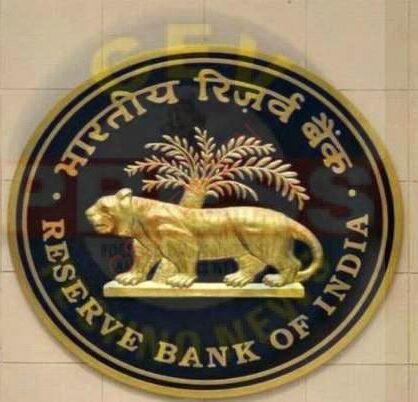RESERVE BANK OF INDIA MASTER CIRCULAR FOR ARCs
IMPORTANT KEY POINTS RELATED TO THE VALUATION PROFESSION
Master Circular – Asset Reconstruction Companies
In order to have all current instructions/guidelines on the subject at one place, the Reserve Bank of India issues updated Circulars/guidelines. The instructions contained in The Asset Reconstruction Companies (Reserve Bank) Guidelines and Directions, 2003 (vide Notification No.DNBS.2/CGM(CSM)-2003, dated April 23, 2003) together with Guidance Notes updated as on January 31, 2022 are reproduced below.
Master Circular
Master Circular – Asset Reconstruction Companies
Important key Features related to our profession are:
2. Definitions
(vii) “Earning value” means the value of an equity share computed by taking the average of profits after tax as reduced by the preference dividend and adjusted for extraordinary and non-recurring items, for the immediately preceding three years and further divided by
the number of equity shares of the investee company and capitalised at the following rate:
(a) in case of predominantly manufacturing company, eight per cent;
(b) in case of predominantly trading company, ten per cent; and
(c) in case of any other company, including non-banking financial company, twelve per cent;
Note: If, an investee company is a loss-making company, the earning value will be taken at zero;
(viii) “Fair value” means the mean of the earning value and the break up value;
(ix) “Non-performing Asset” (NPA) means an asset in respect of which:
a) Interest or principal (or instalment thereof) is overdue for a period of 180 days or more from the date of acquisition or the due date as per contract between the borrower and the originator, whichever is later;
b) interest or principal (or instalment thereof) is overdue for a period of 180 days or more from the date fixed for receipt thereof in the plan formulated for realisation of the assets referred to in paragraph 6(C) herein;
2 Inserted vide Circular No.DNBS/PD (SC/RC) No.17/26.03.001/2009-10 dated April 21, 2010 3 Substituted vide Circular No.DNBS (PD) CC.No.18/SCRC/26.03.001/2009-2010 dated April 21, 2010
c) interest or principal (or instalment thereof) is overdue on expiry of the planning period, where no plan is formulated for realisation of the assets referred to in paragraph 6(C) herein; or
d) any other receivable, if it is overdue for a period of 180 days or more in the books of the ARC; Provided that the Board of Directors of an ARC may, on default by the borrower, classify an asset as NPA even earlier than the period mentioned above (for facilitating enforcement as provided for in Section 13 of the Act).
(x) “Overdue” means an amount which remains unpaid beyond the due date;
(4) Enforcement of Security Interest
17 (i) ARCs are required to obtain, for the purpose of enforcement of security interest, the consent of secured creditors holding not less than 60% of the amount outstanding to a borrower as against 75% hitherto.
(ii) While taking recourse to the sale of secured assets in terms of Section 13(4) of the Act, a ARC may itself acquire the secured assets, either for its own use or for resale, only if the sale is conducted through a public auction.
14. Disclosures in the balance sheet
(1) Every ARC shall, in addition to the requirements of Schedule III of the Companies Act, 2013, prepare the following schedules and annex them to its balance sheet :
Continuing Disclosures
(i) The names and addresses of the banks/ FIs from whom financial assets were acquired and the value at which such assets were acquired from each such bank/ FIs;
34 Inserted vide Notification No.DNBS(PD-SC/RC) No.11/PCGM (KKV)/-2014 dated August 05, 2014
(ii) Dispersion of various financial assets industry-wise and sponsor-wise. (dispersion is to be indicated as a percentage to the total assets);
(iii) Details of related parties as per Accounting Standard and Guidance notes issued by the ICAI and the amounts due to and from them;
(iv) A statement clearly charting therein the migration of financial assets from standard to non-performing;
35[(v) Value of financial assets acquired during the financial year either on its own books or in the books of the trust;
(vi) Value of financial assets realized during the financial year;
(vii) Value of financial assets outstanding for realization as at the end of the financial year;
(viii) Value of SRs redeemed partially, and the SRs redeemed fully during the financial year;
(ix) Value of SRs pending for redemption as at the end of the financial year;
(x) Value of SRs which could not be redeemed as a result of non-realization of the financial asset as per the policy formulated by the ARC under Paragraph 6(C)(ii) or 6(C)(iii);
(xi) Value of land and/ or building acquired in the ordinary course of business of reconstruction of assets (year wise);]
36(xii) The basis of valuation of assets if the acquisition value of the assets is more than the Book Value;
(xiii) The details of the assets disposed of (either by write off or by realization) during the year at a discount of more than 20% of valuation as on the previous year-end and the reasons therefor;
22. Reporting to Indian Banks’ Association (IBA) – The ARCs shall report to IBA the details of Chartered Accountants, Advocates and Valuers (who have committed serious irregularities in the course of rendering their professional services) for including in the IBA database of Third Party Entities involved in fraud. However, the ARCs will have to ensure that they follow meticulously the procedural guidelines issued by IBA (Circular No. RB- II/Fr./Gen/3/1331 dated August 27, 2009) and also give the parties a fair opportunity to explain their position and justify their action before reporting to IBA. If no reply/ satisfactory clarification is received from them within one month, the ARCs shall report their details to IBA. ARCs should consider this aspect before assigning any work to such parties in the future.
(vii) Methodology for valuation of SRs for declaration of NAV Each rating category in the recovery scale will have an associate range of recovery, expressed in percentage terms, which can be used for computing NAV of SRs. The NAV should be restricted within the recovery range associated with the rating assigned to the SRs. The ARC based on its recovery experience should choose a particular percentage within the recovery range indicated by the Rating Agency. The Recovery Rating percentage so picked by the ARC multiplied by the face value of the
SR will give the NAV. The ARC should provide the rationale for selection of the particular percentage of Recovery Rating. For example, if range is between 81% – 90%, ARC may pick up 87% based on its judgement. The face value of say Rs 10 multiplied by the recovery percentage i.e. 87% would give the NAV as Rs 8.70].
TO READ THE FULL CIRCULAR CLICK ON THE BLUE LINE
CLICK HERE



